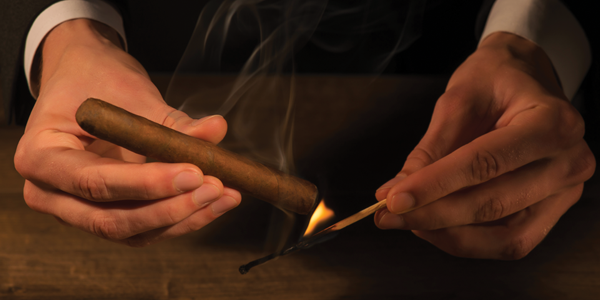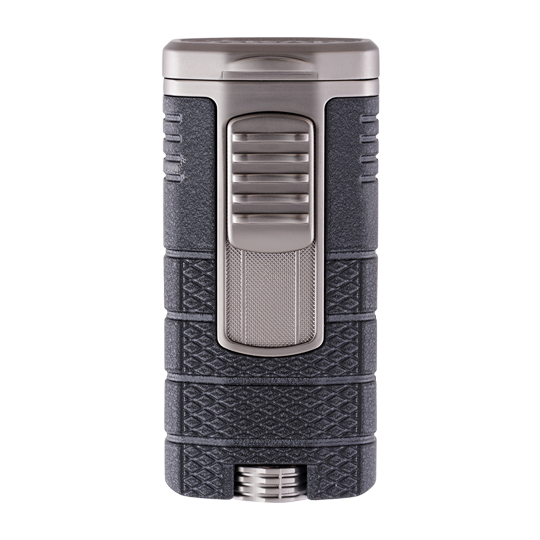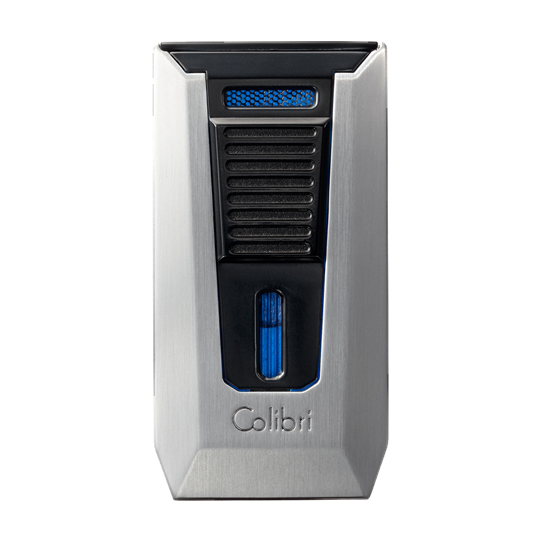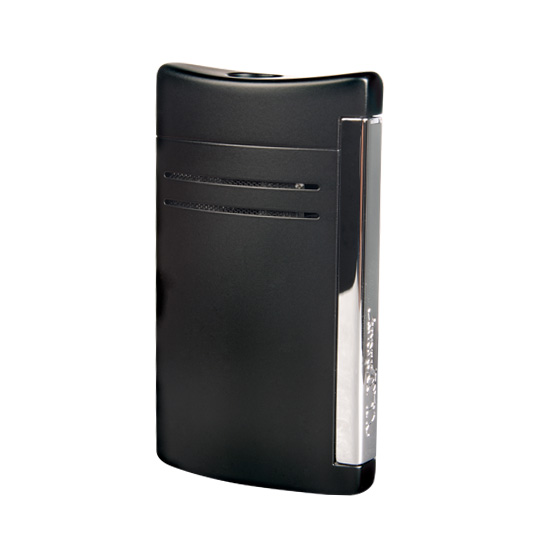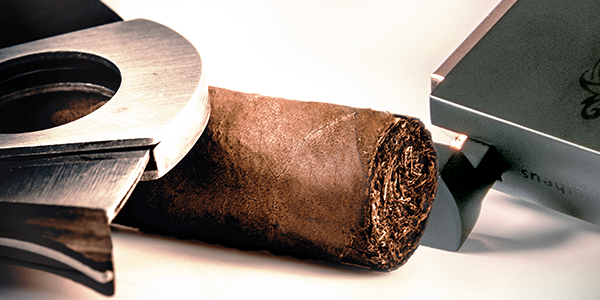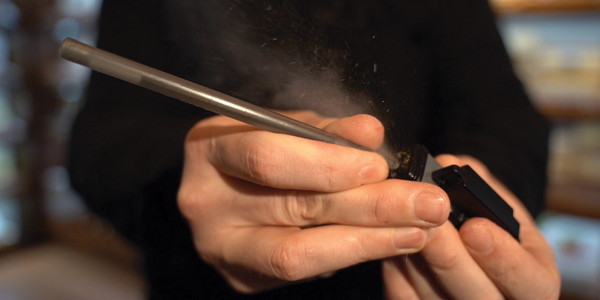Does How You Light a Cigar Affect Your Smoke?
Lighting up a cigar is easy. But, it’s not like lighting a cigarette or a candle. Cigars are handcrafted into thick cylindrical shapes from premium tobaccos. Because the tobacco is humidified, it takes a few moments to fully light a cigar. There are different methods to light a cigar correctly. And there are few methods to avoid. How you light a cigar can affect its taste. Here are the most common ways to light up a premium cigar and some good tips for preventing a fire in your man cave.
Butane Makes a Difference
Before we outline the different lighting methods, keep in mind not all butane is created equal. The best kinds of butane are refined at least five times to remove impurities that can clog and corrode the jets in your lighter as well as interrupt the taste of a premium cigar. Don’t use cheap butane from a convenience store.
Lighting a Cigar with a Torch Lighter
Cigar lovers love torch lighters. Flashy, sporty, and innovative designs from brands like Xikar, Colibri, and ST Dupont tempt the stingiest-willed aficionados to hit the ignition and add another one to their collection. Some torch lighters can char the end of a premium cigar in seconds, especially with three, four, or five red-hot jets cranked to the highest, hottest setting.
Lightning a cigar is not about speed. Novices constantly make the mistake of incinerating the entire foot of the cigar at close range until it’s an embarrassing and smoldering mess. Hold the flame away from the foot of your cigar by at least 4 to 6 inches. The top of the flame on a torch extends beyond the blue glow you can actually see.
Gently toast the foot of your cigar at a safe distance like a marshmallow. Searing it like a welder will only cause an unsightly blizzard of ashes to land in your lap while your cigar combusts apart like a plane that’s taken on enemy fire. Be patient and rotate your cigar over the flame.
Lighting a Cigar with a Soft Flame Lighter
Soft flame lighters, like a standard inexpensive Bic, should be used with a bit of caution too. Hold your cigar at a safe distance from a soft flame. A soft flame lighter is less likely to scorch the foot of your cigar, though.
How fast and/or how aggressively you draw on your cigar during the first puffs will determine how quickly you cigar lights with a soft flame. Rotate your cigar over the flame to ensure you light the foot evenly. Inspect the lit end of the cigar after you get it going. Gently blow air on the foot to see that the entire circumference brightens up and you haven’t missed any spots.
Lighting a Cigar with Wooden Matches
Wooden matches are not ideal if you’re smoking outside, however, we can think of plenty of occasions where a lighter was nowhere to be found and if it weren’t for matches, we would have hauled our cigars back home in an unhappy and unsmoked state.
When it comes to matches, wooden matches are much better than a book of paper matches. Try to avoid matches with a sulfur tip. The sulfur can interfere with the taste of your cigar. If sulfur matches are all you’ve got, let the sulfur burn off the end before you hit your cigar with it. It’s best to use two matches at a time. Two matches will give you a wider flame, which makes it easier to fully light the end of your cigar as you puff on it.
If you have access to them or you’re in a cigar lounge, extra-long cedar matches are best. They are designed for lighting cigars. They burn longer after you strike them, giving you more time to get your cigar going.
Lighting a Cigar with Cedar Spills
Cedar spills are long strips of raw cedar. You can buy them, but most cigar smokers simply break off strips from the cedar sheets packaged with the cigars in the box. Some cigars are individually wrapped in cedar as well. Some consider cedar spills pretentious, others swear by them. We think cedar spills are a bit of a novelty, but they are also convenient.
The most old school way to light a cigar is to light the cedar spill on fire and light your cigar off the burning cedar. This method guarantees no fuel, sulfur, or butane will interfere with your cigar’s taste. Caution is advised. Cedar spills catch on fire quickly and can cause a big mess (or a big fire) if you’re not careful. When you light a cedar spill, a large hard-to-control flame can erupt.
Make sure an ashtray is close by. It pays to know where the nearest faucet or fire extinguisher are located, just in case.
Lighting a Cigar with a Zippo Lighter
Zippo lighters are not inherently evil. However, many cigar lovers avoid them because they take liquid fuel which can make your cigar taste like nasty liquid gas. Zippo lighters also possess a reliability factor that’s hard to beat. The old-school flint wheel and wick in a Zippo will light without fail almost every time as long as you’ve got fuel in the tank. Zippo lighters inspire nostalgia.
If you’re firing up with a Zippo, just let the wick burn for a few moments so that any liquid fuel residue burns off and isn’t transferred into your cigar from the flame.
A Few Tips on Lighting Your Cigar
When you’re ready to light up review a few quick tips on how to cut and light a cigar.
- Gently Toast Your Cigar with the Flame
Gradually let the foot of your cigar catch fire at a safe distance. Don’t be afraid to hit the foot multiple times with your lighter or matches.
- Rotate Your Cigar Over the Flame
Rotate your cigar over the flame to ensure the entire circumference of the foot is evenly lit.
- Take Your First Puff
Take a few puffs as you light your cigar. Inspect the foot. You can gently blow on the foot of your cigar after it’s lit. If your cigar has been lit evenly, it will glow a uniform red-orange color when you blow on the foot.
- Draw on Your Cigar at a Measured Pace
Even though lighting your cigar may require a more aggressive draw in the beginning, once the cigar is lit, you can draw on the cigar with less intensity. Puff at a measured pace so that your cigar doesn’t burn too hot.
- Touch Up Any Uneven Areas
Occasionally a cigar will canoe or tunnel, causing an uneven burn. In many cases, the cigar will straighten out on its own. But, if an uneven burn persists, touch up the end of the cigar that’s lagging behind with your torch lighter or flame to even it out.
- Don’t Mash Out Your Cigar
As a final measure of courtesy when you’re done smoking, don’t mash or smoosh out your cigar into the bottom of an ashtray. Set it in the ashtray and let it expire gracefully. A premium cigar will burn out on its own after a minute or two. There’s no need to crush it into a smoldering mess.

